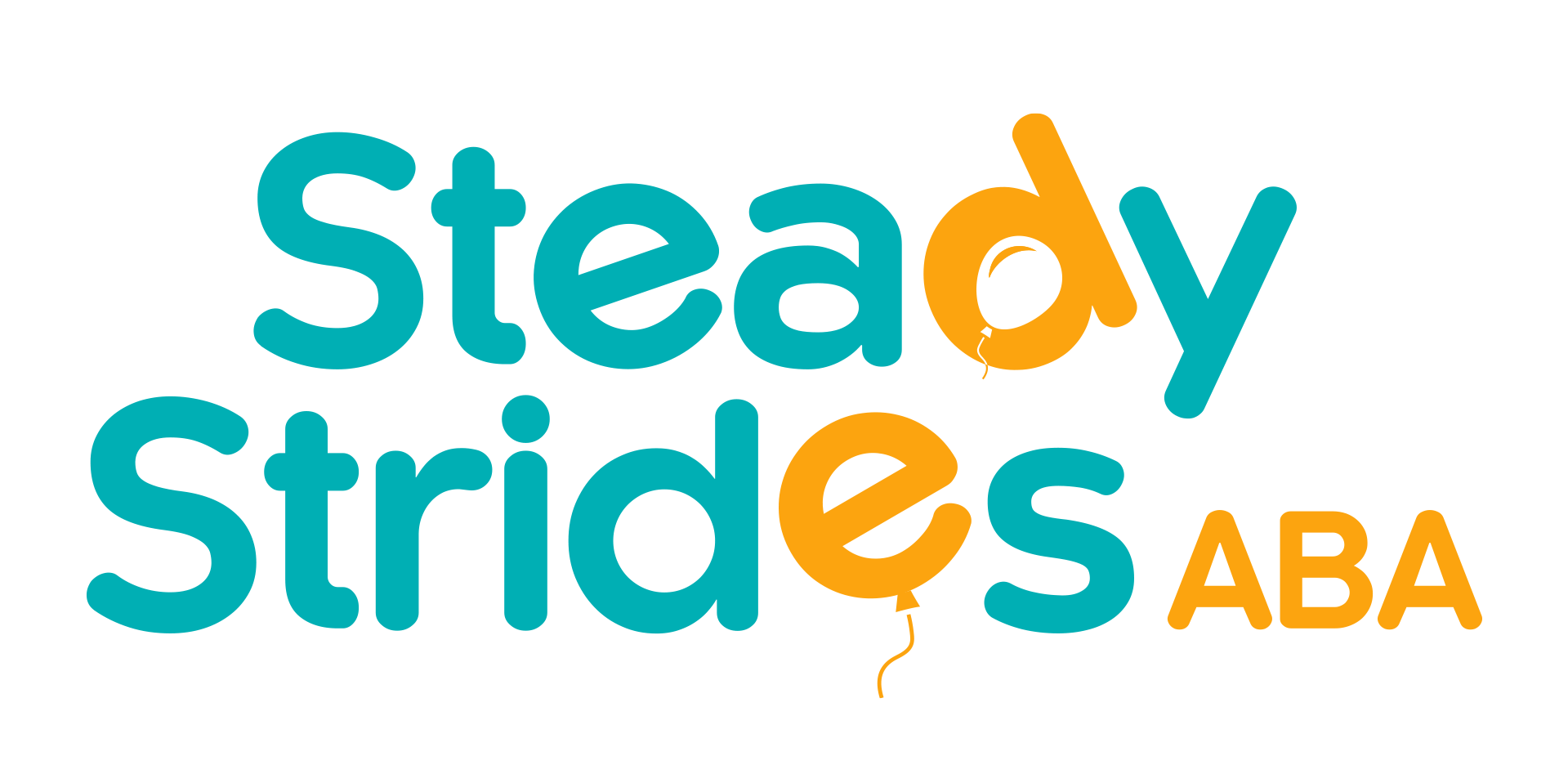In the field of applied behavior analysis, becoming a registered behavior technician (RBT) can open up a world of opportunities. RBT certification demonstrates competence in behavior analysis and is recognized by the Behavior Analyst Certification Board (BACB). If you're considering pursuing a career as an RBT, you may be wondering how long it takes to obtain your certification.
In this blog, we will explore the process of RBT certification, the time investment required, and the benefits of becoming a registered behavior technician. Whether you're just starting out or looking to advance your career, RBT certification can be a valuable step in your professional journey.
Understanding the RBT Certification
Before we delve into the timeframe of RBT certification, let's first understand what it entails. An RBT, or registered behavior technician, is a professional who implements behavior analysis interventions under the supervision of a qualified Board Certified Behavior Analyst (BCBA).
RBT certification is a process that validates an individual's competency in behavior analysis and demonstrates their commitment to professional conduct in the field. With their expertise in behavior analysis techniques, RBTs play a crucial role in supporting individuals with autism spectrum disorder and other developmental disabilities.
What is RBT Certification?
RBT certification is administered by the Behavior Analyst Certification Board (BACB), an internationally recognized organization that sets standards for behavior analysis professionals. The certification process ensures that RBTs have met the necessary requirements to practice in the field of applied behavior analysis. To become an RBT, individuals must first complete a high school diploma or equivalent. They must also undergo a criminal background check to ensure the safety and well-being of the individuals they will be working with.
Once the eligibility requirements are met, individuals can enroll in an RBT training program. This program typically consists of 40 hours training course, which covers essential topics in behavior analysis such as data collection, behavior assessment, and intervention strategies.
During the training program, individuals work under the supervision of a certified behavior analyst, who provides guidance and support throughout the process. After completing the training program, individuals must pass the RBT certification exam, which assesses their knowledge and competence in behavior analysis principles.
Why Pursue RBT Certification?
There are several reasons why individuals choose to pursue RBT certification. For starters, RBT certification can open up new career advancement opportunities in the field of applied behavior analysis. With their specialized training, RBTs are in high demand in therapy settings, schools, and other organizations that provide services to individuals with autism spectrum disorder.
Additionally, RBT certification demonstrates a commitment to professional conduct and ethical standards. As an RBT, individuals are responsible for implementing behavior analysis interventions in an ethical and evidence-based manner. RBTs work closely with individuals with autism spectrum disorder, helping them develop essential skills and improve their quality of life.
By becoming certified, individuals show their dedication to providing quality care and promoting positive outcomes for the individuals they serve.
The Path to RBT Certification
Now that we have an understanding of RBT certification, let's explore the path to becoming a registered behavior technician. The journey starts with meeting the eligibility requirements, which include having a high school diploma or equivalent and passing a criminal background check. Once eligible, individuals can enroll in an RBT training program, which typically consists of a 40-hour training course. This program provides the necessary knowledge and skills required to practice behavior analysis as an RBT.
After completing the training program, individuals must pass the RBT certification exam. This exam evaluates their competency in behavior analysis and ensures that they are prepared to work as an RBT. The exam covers topics such as data collection, behavior assessment, and intervention strategies. Passing the certification exam is the final step in becoming a registered behavior technician.
Eligibility Requirements for RBT Training
To be eligible for RBT training, individuals must meet certain requirements. These requirements include possessing a high school diploma or equivalent, as well as passing a criminal background check. The high school diploma requirement ensures that individuals possess the basic educational foundation necessary to understand behavior analysis principles and techniques.
The criminal background check requirement is in place to ensure the safety of individuals with autism spectrum disorder and other developmental disabilities. By conducting these checks, organizations can ensure that RBTs have no history of criminal behavior that may pose a risk to the individuals they will be working with.
It's important to note that individuals who have earned a General Education Development (GED) certificate in place of a high school diploma are also eligible for RBT training. The GED is an alternate pathway for individuals who did not complete high school but demonstrate the knowledge and skills equivalent to a high school graduate. By recognizing the GED, RBT certification allows individuals from diverse educational backgrounds to pursue a career in behavior analysis.
Steps in the RBT Training Process
The RBT training process involves several steps that individuals must complete to become certified. Here's an overview of the process:
- Application: Individuals interested in becoming an RBT must first fill out an application, providing their personal and educational information. You may do so by creating a BACB account.
- Background check: As part of the eligibility requirements, individuals must undergo a criminal background check
to ensure they meet the necessary safety standards.
- Training coursework: Once eligibility is confirmed, individuals enroll in an RBT training program, which typically consists of a 40-hour training course. This course covers essential topics in behavior analysis, including data collection, behavior assessment, and intervention strategies.
- Competency assessment: After completing the training coursework, individuals must demonstrate their competence in behavior analysis through a competency assessment. This assessment evaluates their ability to apply behavior analysis techniques effectively and ethically.
- Qualified supervisor: Throughout the training process, individuals work under the supervision of a qualified behavior analyst, who provides guidance, feedback, and support. The supervisor plays an integral role in ensuring the individuals' success in the training program.
- Certification exam: The final step in the RBT training process is to pass the RBT certification exam. This exam evaluates individuals' knowledge and competence in behavior analysis principles and techniques.
By successfully completing these steps, individuals can obtain their RBT certification and embark on a rewarding career in behavior analysis.
Timeframe for Acquiring RBT Certification
The amount of time it takes to acquire RBT certification can vary depending on several factors, including the individual's study pace and the availability of training programs. Let's take a closer look at the different aspects of the RBT certification process and how long they may take:
- Duration of RBT training program: RBT training programs typically consist of a 40-hour training course. The duration of these programs can vary, depending on whether individuals study full-time or part-time. On average, individuals can complete the training program within 2-6 weeks, depending on their study pace.
- Time investment for RBT competency assessment: The competency assessment is an important step in the RBT certification process, as it evaluates individuals' proficiency in behavior analysis techniques. The time invested in preparing for this assessment can vary, depending on individuals' prior knowledge of behavior analysis and their study habits. On average, individuals may spend 1-2 weeks preparing for the assessment.
- Preparing for and taking the RBT exam: The RBT certification exam assesses individuals' knowledge and competence in behavior analysis principles and techniques. The time invested in preparing for this exam can vary, depending on individuals' study materials and study habits. On average, individuals may spend 2-4 weeks preparing for the exam.
Overall, the process of acquiring RBT certification can take anywhere from 2-4 months, depending on individuals' study pace and availability of training programs.
Duration of RBT Training Program
The duration of an RBT training program can vary, depending on individuals' study pace and the structure of the program. RBT training programs typically consist of a 40-hour training course, which covers essential topics in behavior analysis. The training course provides individuals with the knowledge and skills necessary to apply behavior analysis techniques in their work as an RBT.
The duration of the training program can vary, depending on whether individuals study full-time or part-time. Some individuals may choose to complete the training program in a concentrated time frame, studying intensively for a few weeks. Others may prefer to study at a more relaxed pace, spreading the coursework over a longer period of time.
On average, individuals can complete the RBT training program within 2-6 weeks, depending on their study pace and availability. It's important for individuals to find a training program that fits their schedule and allows them to learn at their own pace.
Time Investment for RBT Competency Assessment
The RBT competency assessment is an important step in the certification process, as it evaluates individuals' proficiency in behavior analysis techniques and their ability to implement behavior analysis interventions effectively and ethically. The amount of time individuals invest in preparing for this assessment can vary, depending on their prior knowledge of behavior analysis and their study habits.
On average, individuals may spend 1-2 weeks preparing for the competency assessment. During this time, individuals review the coursework from their RBT training program, study behavior analysis principles and techniques, and practice applying these skills in real-world scenarios.
It's important for individuals to allocate sufficient time for preparation, as the competency assessment is a key component in evaluating individuals' readiness to work as an RBT. By investing time in studying, practicing, and seeking feedback, individuals can increase their chances of success in the competency assessment and ultimately, in their role as a registered behavior technician.
Preparing for and Taking the RBT Exam
Preparing for and taking the
RBT exam is an essential step in the certification process. The exam assesses individuals' knowledge and competence in behavior analysis principles and techniques, ensuring that they are prepared to provide effective interventions as an RBT. Here are some tips to help individuals prepare for and succeed in the RBT exam:
- Study materials: Utilize study materials such as textbooks, online resources, and practice exams to review behavior analysis concepts and familiarize yourself with the exam format.
- Additional resources: Consider seeking additional resources, such as study guides or online tutorials, to supplement your understanding of behavior analysis principles. You can also learn about the supporting docummentation required for the exam.
- Study at your own pace: Develop a study schedule that allows you to study consistently and at a pace that works for you. Break down the material into manageable chunks and review regularly to reinforce your understanding.
- Take practice exams: Practice exams can help you gauge your knowledge and identify areas where you may need additional study. Focus on areas of weakness and use practice exams to simulate the exam environment.
- Familiarize yourself with exam procedures: Understand the logistics of the exam, such as exam duration, question format, and exam administration procedures. This will help reduce anxiety on exam day.
The RBT certification exam is administered by Pearson Vue, an authorized testing center. By following effective study strategies and being well-prepared, individuals can increase their chances of success in the RBT exam.
Maximizing Success in RBT Certification
Achieving success in RBT certification requires effective study strategies and a comprehensive understanding of behavior analysis principles. In this section, we will discuss strategies to help individuals maximize their success in RBT certification, both in the RBT training program and in the certification exam.
Effective Study Strategies for the RBT Exam
Preparing for the RBT exam requires a comprehensive study plan to ensure individuals are fully prepared. Here are some effective study strategies to help individuals succeed in the exam:
- Utilize study materials: Use textbooks, online resources, flashcards, and study guides specifically designed for the RBT exam to review behavior analysis principles and reinforce your understanding of key concepts.
- Seek additional resources: Consider using additional resources, such as study groups, online forums, or professional organizations, to gain additional insights and perspectives on behavior analysis.
- Study at your own pace: Develop a study schedule that works for you, allowing time for breaks, revision, and practice exams. Break the material into manageable sections and allocate sufficient time to review and reinforce your understanding.
- Practice, practice, practice: Take advantage of practice exams to familiarize yourself with the exam format, practice time management, and identify areas of weakness that require additional study.
By implementing these study strategies, individuals can increase their chances of success in the RBT exam and achieve certification in behavior analysis.
Common Mistakes and How to Avoid Them
When preparing for the RBT exam, it's important to be aware of common mistakes that individuals make and how to avoid them. By understanding these pitfalls, individuals can adjust their study strategies accordingly and maximize their chances of success:
- Cramming: One of the most common mistakes individuals make is leaving exam preparation to the last minute. Instead, create a study plan and allocate time throughout the training program to review content regularly.
- Neglecting practice exams: Many individuals underestimate the importance of taking practice exams. Practice exams help familiarize individuals with the exam format, reduce anxiety, and identify areas that require additional study.
- Lack of active learning: Passive reading of study materials may not be effective in retaining information. Instead, engage in active learning strategies such as taking notes, summarizing key concepts, and teaching the material to someone else.
- Ignoring weaker areas: It's natural to focus on areas of strength, but it's crucial to allocate time to study and practice in weaker areas as well. Identify your weak areas through practice exams, seek additional resources, and seek clarifications when needed.
- Not seeking support: Don't be afraid to seek support from qualified behavior analysts, study groups, or professional organizations. These resources can provide valuable insights, clarification, and additional study materials.
By avoiding these common mistakes and implementing effective study strategies, individuals can increase their chances of success in the RBT exam before submit your application, and achieve certification as a registered behavior technician.
Benefits of Becoming a Registered Behavior Technician
Becoming a registered behavior technician (RBT) can have a positive impact, not only on the lives of individuals with autism spectrum disorder but also on an individual's career. RBT certification opens up various benefits and opportunities in the field of applied behavior analysis, including career advancement, job flexibility, and the opportunity to make a positive impact in the lives of individuals.
The Impact of RBTs on People's Lives
One of the most rewarding aspects of being an RBT is the positive impact individuals can have on the lives of individuals with autism spectrum disorder and other developmental disabilities. RBTs play a crucial role in implementing behavior analysis interventions, helping individuals acquire new skills, and improving their overall quality of life.
By utilizing evidence-based techniques and working closely with individuals, RBTs contribute to positive outcomes in various areas, including communication, social skills, daily living skills, and behavior management. Through their dedication and expertise, RBTs empower individuals to reach their full potential and thrive in their daily lives.
Career Advancement Opportunities as an RBT
RBT certification can open doors to career advancement opportunities in the field of applied behavior analysis. With their specialized training, RBTs are in high demand in various settings, including therapy centers, schools, and residential facilities. Here are some career advancement opportunities for RBTs:
- ABA therapist: Many RBTs advance their career by becoming applied behavior analysis (ABA) therapists. ABA therapists work directly with individuals, implementing behavior analysis interventions and supporting their development.
- Certified behavior analyst: With further education and experience, RBTs can pursue certification as a certified behavior analyst (BCBA). BCBA certification allows individuals to take on leadership roles in behavior analysis, design behavior intervention plans, and supervise behavior technicians.
By pursuing career advancement opportunities, RBTs can expand their knowledge, skills, and impact in the field of applied behavior analysis.
Job Flexibility and Security in the RBT Field
Job flexibility is another benefit of becoming an RBT. The demand for behavior analysis professionals, including RBTs, has been steadily increasing in recent years. As a result, there are numerous job opportunities and open positions available in therapy centers, schools, and other organizations that provide services to individuals with autism spectrum disorder.
RBTs also enjoy job security in the field of applied behavior analysis. The need for behavior analysis services continues to grow, ensuring a steady demand for qualified RBTs. With their specialized training and certification, RBTs are well-positioned to secure long-term employment in this rewarding field.
Exploring Job Opportunities Post-RBT Certification
Once certified as an RBT, individuals can explore various job opportunities in the field of applied behavior analysis. RBTs are in high demand in a range of work settings, including:
- Therapy centers: RBTs can work in therapy centers that provide applied behavior analysis (ABA) therapy to individuals with autism spectrum disorder and other developmental disabilities.
- Schools: RBTs can work in school settings, providing behavior analysis services to students with special needs, helping them develop essential skills, and supporting their academic success.
- Residential facilities: RBTs may also find employment in residential facilities that support individuals with autism spectrum disorder in their daily living activities and behavior management.
With their certification and expertise in behavior analysis, RBTs have numerous opportunities to make a positive impact in individuals' lives across a variety of work settings.
Networking and Job Searching Strategies
Networking and effective job searching strategies can help individuals in their pursuit of job opportunities in the field of applied behavior analysis. Here are some strategies to consider:
- Networking: Attend professional conferences, workshops, and virtual events to connect with behavior analysis professionals, potential employers, and peers in the field. Networking can open doors to new opportunities and provide valuable insights and advice.
- Job searching strategies: Use online job boards, professional organization websites, and social media platforms to search for open positions in behavior analysis settings. Explore resources specifically dedicated to applied behavior analysis job opportunities.
- Email inquiries: Reach out to therapy centers, schools, and other organizations directly via email to inquire about potential job opportunities. Introduce yourself, express your interest, and attach your resume or CV for consideration.
By utilizing effective networking strategies, staying informed about open positions, and proactively reaching out to potential employers, individuals can increase their chances of finding job opportunities in the field of applied behavior analysis.
Considering Various Work Settings as an RBT
As an RBT, individuals have the option to work in various work settings, depending on their interests and career goals. Here are some work settings to consider:
- Therapy centers: RBTs can work in therapy centers that provide applied behavior analysis (ABA) therapy to individuals with autism spectrum disorder and other developmental disabilities. These therapy centers often offer a range of services, including early intervention, behavioral therapy, and social skills training.
- Schools: RBTs may find employment in schools, where they support students with special needs, implement behavior analysis interventions, and collaborate with teachers and school staff to promote positive behavior and academic success.
- Residential facilities: RBTs may also work in residential facilities that provide support and care for individuals with autism spectrum disorder. In this setting, RBTs help individuals with daily living activities, behavior management, and skill development.
Consider your interests, preferences, and career goals when exploring different work settings as an RBT. Each setting offers unique opportunities to make a positive impact in the lives of individuals with autism spectrum disorder and other developmental disabilities.
How Often Does RBT Certification Need Renewal?
RBT certification is valid for one year from the date of certification. To maintain their certification, RBTs must go through the renewal process annually. This process involves meeting certain requirements set by the Behavior Analyst Certification Board (BACB), the organization responsible for administering RBT certification.
The RBT renewal application process typically involves completing a renewal competency assessment and submitting it along with a renewal application form and payment to the BACB within 45 days of your certification expiration date. Don't wait until the last minute – missing the deadline can result in a late fee or require you to re-apply for certification altogether.
To renew their certification, RBTs must complete the renewal competency assessment. You must also continue getting the education requirements, which may include additional coursework, workshops, or conferences related to behavior analysis. Continuing education ensures that RBTs stay up-to-date with the latest research and developments in the field, allowing them to provide the most effective interventions to individuals they serve.
Additionally, RBTs must demonstrate professional conduct by adhering to the ethical guidelines set by the BACB. This includes maintaining appropriate documentation of sessions, obtaining necessary consents, and protecting the privacy and confidentiality of individuals they work with.
By renewing their certification annually, RBTs show their commitment to professional growth, competence, and ethical conduct in the field of applied behavior analysis, ensuring the highest quality of care for individuals with autism spectrum disorder and other developmental disabilities.
Conclusion
In conclusion, becoming a Registered Behavior Technician (RBT) is a valuable and rewarding career path. It requires dedication, time, and effort to complete the necessary training and pass the exam. However, the benefits of becoming an RBT are numerous. Not only will you make a positive impact on people's lives, but you will also have opportunities for career advancement and job flexibility.
It's important to approach the RBT certification process with a strategic mindset, utilizing effective study strategies and avoiding common mistakes. Once certified, you can explore various job opportunities and work settings. Remember that RBT certification needs to be renewed periodically to maintain your credentials. Embrace this journey and embark on a fulfilling career as a Registered Behavior Technician.
At Steady Strides ABA, we're committed to providing exceptional care for children with autism through compassionate and evidence-based ABA therapy. Our team of experienced professionals is dedicated to supporting RBTs in their growth and development. If you're passionate about making a positive impact, we invite you to explore career opportunities at Steady Strides ABA in Texas.
Visit our website today to learn more about becoming a Registered Behavior Technician and how you can join our mission of empowering children with autism to thrive.













